Simulated and Lab-Grown Diamonds Aren't Always As Sustainable As They Seem
These trending diamond copycats are cheaper than the real thing, but are they as awesome as everyone claims?
Published Feb. 15 2024, 11:13 a.m. ET
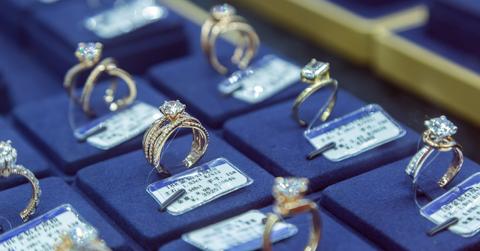
Diamond rings for sale at a trade fair for synthetic diamonds in Zhengzhou in central China's Henan province.
Diamond mining has a long history of detrimental impacts to a region, both in terms of the environmental costs and the human costs of conflict diamonds, so manmade diamonds, which include simulated diamonds and lab-grown diamonds, are gaining popularity. Not only are they more affordable than the iconic gemstone, but diamond simulates do not require destructive mining practices.
Although they have similarities, lab-grown diamonds and diamond simulates are not the same thing. And despite claims of them being sustainable diamonds, these versions of the gemstone also have their own negative environmental impacts.
So, what is the difference between a simulated diamond and a lab-grown diamond, and how do they stack up to the classic, mined diamonds?
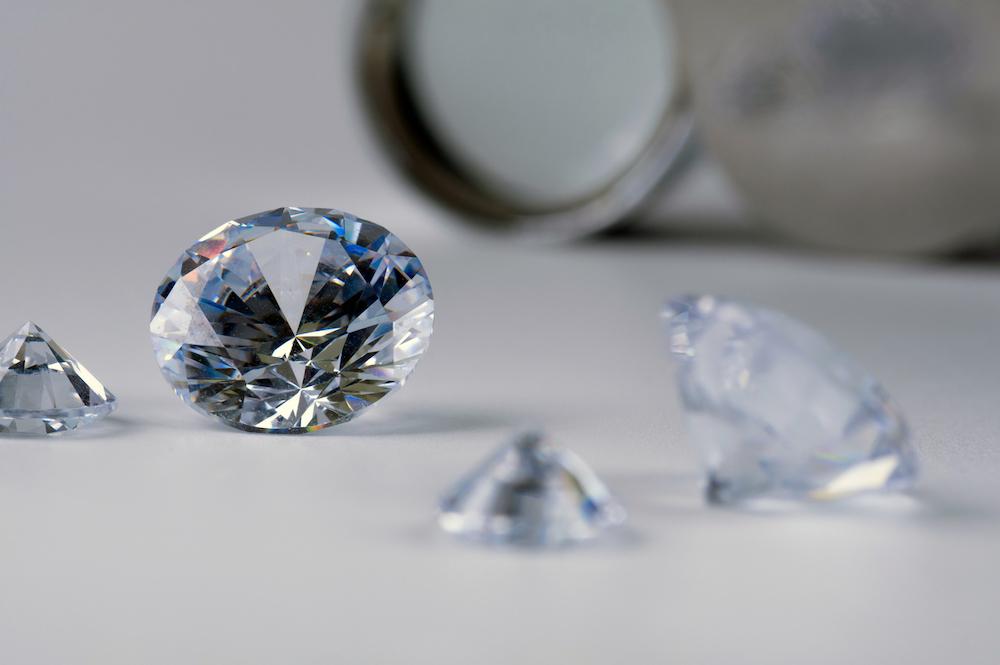
Simulated diamonds vs. lab-grown diamonds:
There are many similarities between lab-grown and simulated diamonds, so the two can easily be confused — particularly because diamond simulates are also made in a lab.
However, simulated diamonds are diamond dupes that are created from a different material (which varies on the type) that closely imitates the diamond, while lab-grown diamonds are considered actual diamonds — they just aren’t found through traditional mining methods.
From a price perspective, lab-grown diamonds cost 10 to 50 percent less than mined diamonds, per the International Gem Society (IGS), although prices vary wildly depending on the stone and quality. For example, a 1-carat mined diamond by James Allen costs around $6,620 while an identical lab-grown diamond from the same jewelry company costs $2,420, according to the IGS.
Simulated diamonds cost peanuts compared to lab-grown or mined diamonds, with 1-carat cubic zirconia stones often costing less than $30.
What is a simulated diamond?
A simulated diamond is a gemstone that looks like a diamond but is an entirely different type of stone, so the makeup is completely different. Perhaps the most well known diamond simulant is cubic zirconia, a synthetically-produced gemstone made of zirconium dioxide which is found in the mineral, baddeleyite, per the Gemological Institute of America (GIA).
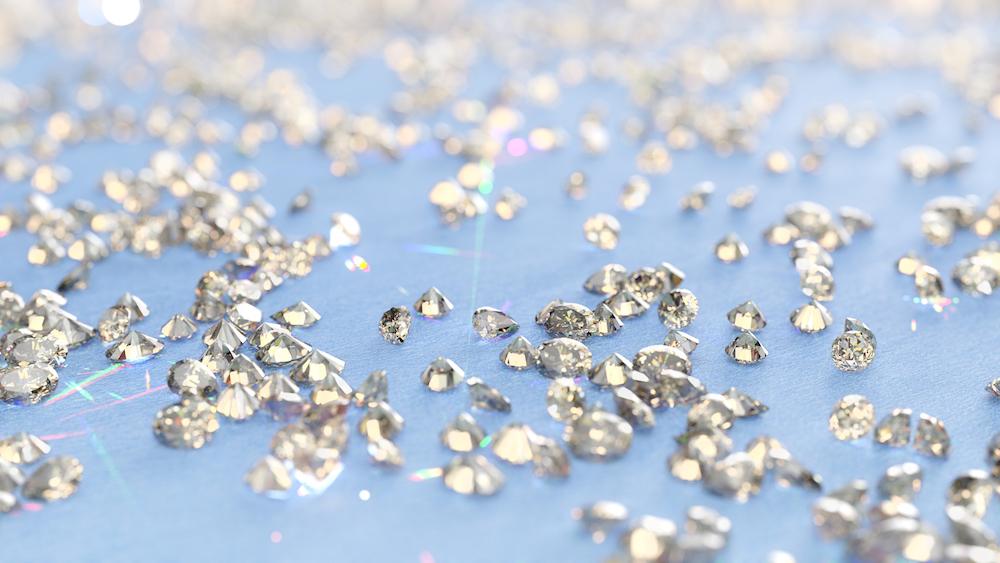
Cubic zirconia is not the only diamond simulate; some others include clear sapphire, zircon, gadolinium gallium garnet (GGG), synthetic rutile, yttrium aluminum garnet, and moissanite. In the late 1990s, moissanite caused a stir, because its properties were so strikingly similar to a diamond that it could “pass” as a real McCoy during thermal probe testing, according to the GIA.
All of these are great for those with a tight budget, or times when you don’t want to risk losing an expensive wedding ring, like during travel or other outdoor adventures. However, although simulated diamonds resemble diamonds, the difference between the two is evident with the naked eye.
As explained by the IGS, mined diamonds have a very slight yellow or brown hue, and in natural light emit a white light, whereas cubic zirconia stones, for example, are totally clear and don’t have quite the same sparkle as true diamonds — which also have unique natural imperfections. Other simulates have distinctive visual properties that “give them away,” like a slightly fuzzy or blurry appearance.
What is a lab-grown diamond?
There are two types of lab-grown diamonds: high pressure/high temperature (HPHT), or chemical vapor deposition (CVD), which are produced through two different methods.
Unlike diamond simulates that mimic diamonds, the IGS says that lab-grown diamonds are essentially identical to natural diamonds. In fact, when the FTC’s Jewelry Guide, which aims to protect consumers from misleading marketing tactics, was updated in 2018, the term “natural” was removed from the traditional definition of a diamond.
As reported by Forbes, the FTC stated that the ruling was made because: “it is no longer accurate to define diamonds as ‘natural’ when it is now possible to create products that have essentially the same optical, physical, and chemical properties as mined diamond.”
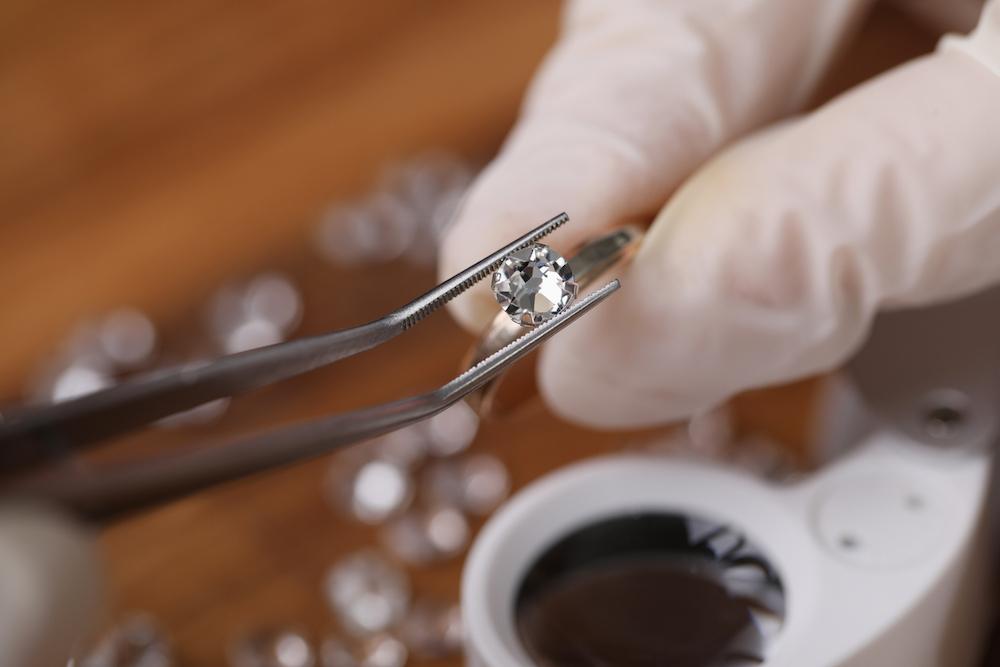
However, one distinct difference between lab-grown diamonds and mined diamonds occurs during the cutting process. Excess from mined diamonds is discarded, whereas lab-grown diamonds are grown to the exact size needed, so nothing is wasted. To prevent mined diamond waste, larger stones are often kept instead of cut, which can affect the quality of the stone.
Like mined diamonds, lab-grown diamonds have small imperfections because the conditions in the lab mimic those found in nature. Lab-grown diamonds undergo the same grading system as mined diamonds, ensuring consistency for consumers.
According to CBS News, demand for lab-grown diamonds rose by around 47 percent in 2023, causing the price to drop by about 20 percent, as more manufacturers joined the sales boom. When you can get an identical product at a fraction of the price, it’s no surprise that lab-grown diamonds are gaining in popularity — but are these diamond alternatives a better option when it comes to the environmental impact?
Are lab-grown or diamond simulates better than mined diamonds?
Diamond simulates and lab-grown diamonds have become an attractive alternative for those seeking a more ethical option. That said, manmade gemstones are not without problems.
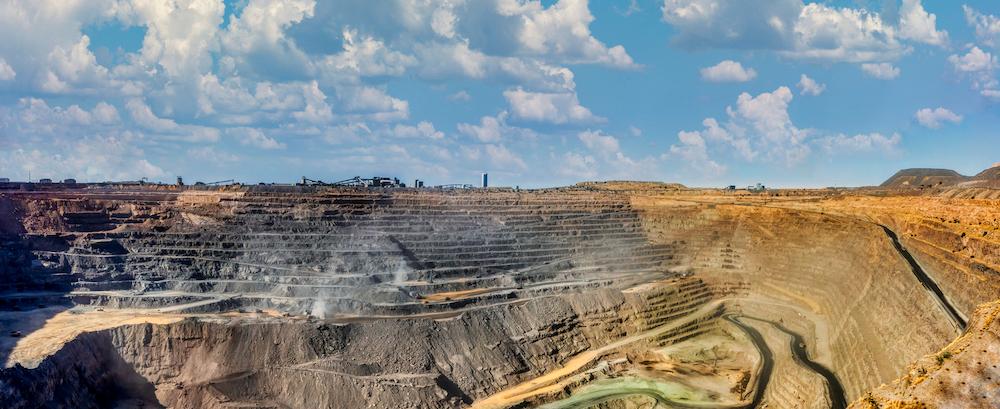
According to the IGS, for each polished carat of mined diamonds, the carbon equivalent of about 160 kilograms of greenhouse gas is released into the atmosphere. In comparison, 1 carat of lab-grown diamond produces a staggering 511 kilograms of greenhouse gas — three times more than mining. Earth911 points out that unless the lab-grown diamond manufacturer uses renewable energy (which most don’t), labeling lab-grown diamonds as “sustainable” isn’t really an accurate claim.
That said, diamond simulates and lab-grown diamonds are still much less destructive than mined diamonds. These alternative processes avoid open pit diamond mining, which destroys entire ecosystems, pollutes waterways, causes massive deforestation, and harms soil. On average, 250 tons of earth are moved per every carat that is mined, according to the IGS.
In many countries where mining is common, workers experience dangerous working conditions for low pay, and children are also forced to do difficult manual labor. Diamond mining has been used to bankroll civil wars, contributing to even more violence in turbulent areas. When considering all of these factors — not just the greenhouse gas emissions — diamond simulates and lab-grown diamonds remain a better alternative to mined diamonds.